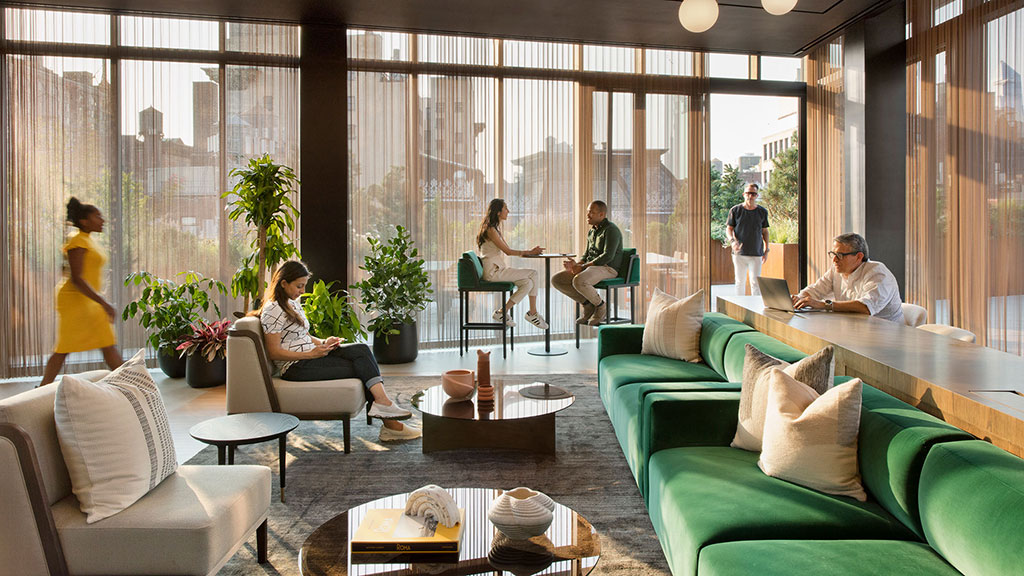The Key to Attracting and Retaining Talent Is Your Office Design
May 09, 2022 | By Robin Klehr Avia
Companies have faced more adversity these past two years than ever before. After learning to cope with a pandemic, a major social justice movement, and the growing climate crisis, another challenge companies now face is the global talent shortage. What will set them apart from competitors is how they design for the human experience in their physical workplaces.
Now that more employees are returning to the office after months (or years) of working from home, we are observing changes in how the workplace is being used. New work styles and shifting priorities are translating to design differences in three key areas: enhanced technology, a focus on employee well-being, and flexible layouts. These elements are all contributing to a new, post-pandemic office ecosystem, which can help attract and retain talent.
The tech-enabled workplace
When I started in this industry in 1976 everything was done by hand — only in the past 20 years has everything gone digital. The way we use technology has accelerated at an unprecedented pace since 2020. Not only is everything done digitally now, but the applications are borderless. Our increased reliance on personal technology in the workplace — from phones, to laptops, to tablets — has led to more clients requesting desks and conference tables with conveniences like wireless charging, portable battery packs, and built-in illumination.
According to our most recent U.S. Workplace Survey, most companies will be asking employees to return to the office at a greater rate than workers currently consider ideal. However, we also found that most workers did choose to return to the office to fulfill specific tasks that were better supported than at home. Designing a workplace that makes the use of personal technology more convenient will serve to enhance the in-office experience, all while attracting talent and preventing attrition.
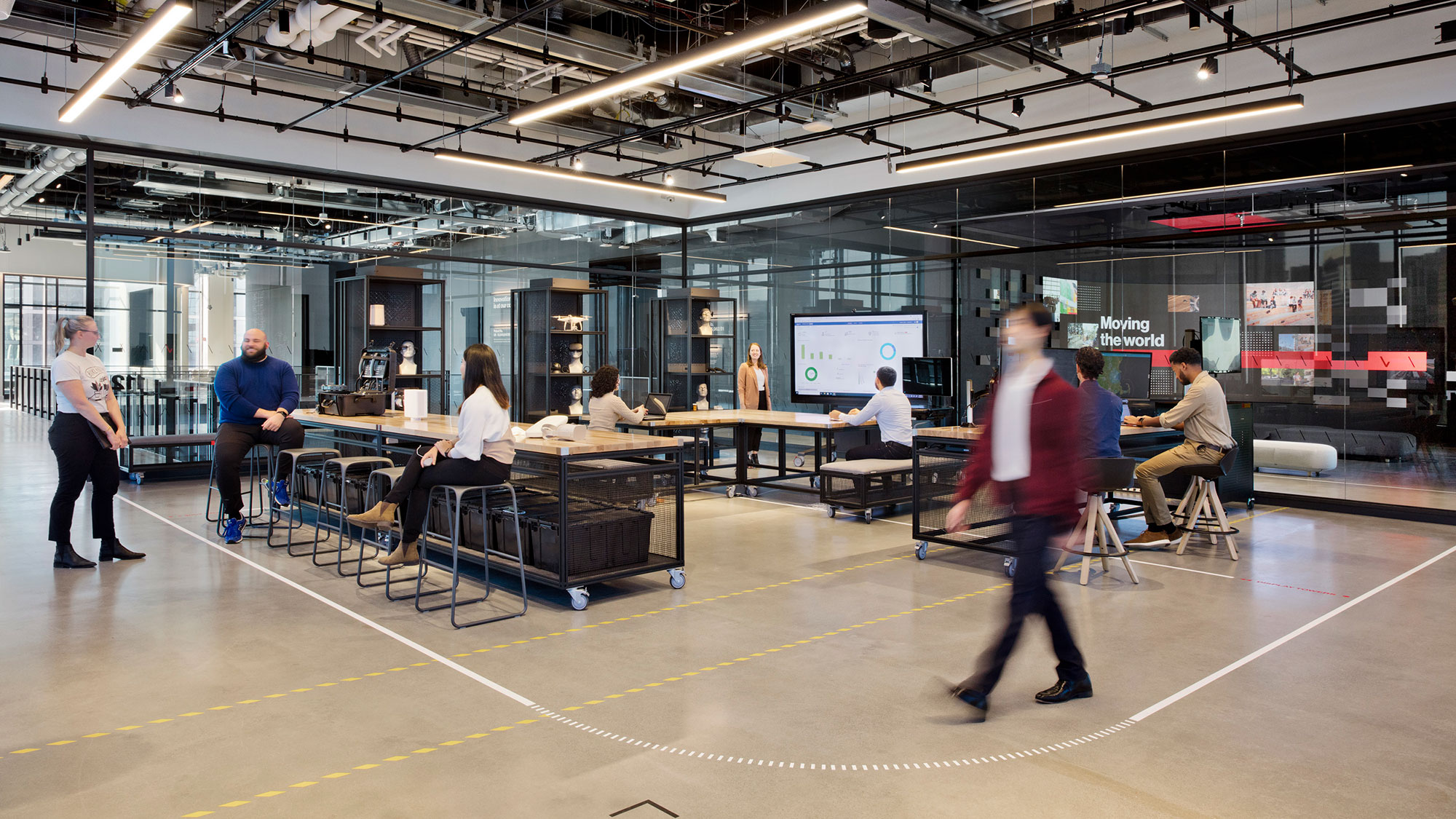
A broader focus on employee well-being
In this competitive hiring landscape, your biggest competitor is your candidate’s living room. Many people have come to enjoy working from home because there is more freedom to go outside, work out, and take breaks during the day — after two years at home, they’re not willing to give that up. Some of the most attractive companies to jobseekers recognize it’s not enough to only offer employees an in-office gym or juice bar — amenities like these have become the baseline. We are broadening our definition of wellness to include not only more amenities focused on physical and mental well-being, but also healthier spaces in general. The inclusion of tech-free serenity and meditation rooms, as well as yoga or group workout rooms, encourages recharging the mind and body as well as digital devices, and can lead to happier and more productive employees. Strategies like incorporating stairs as a central design feature encourages more active work patterns throughout the day, as does adding more seating choices with access to fresh air and daylight.
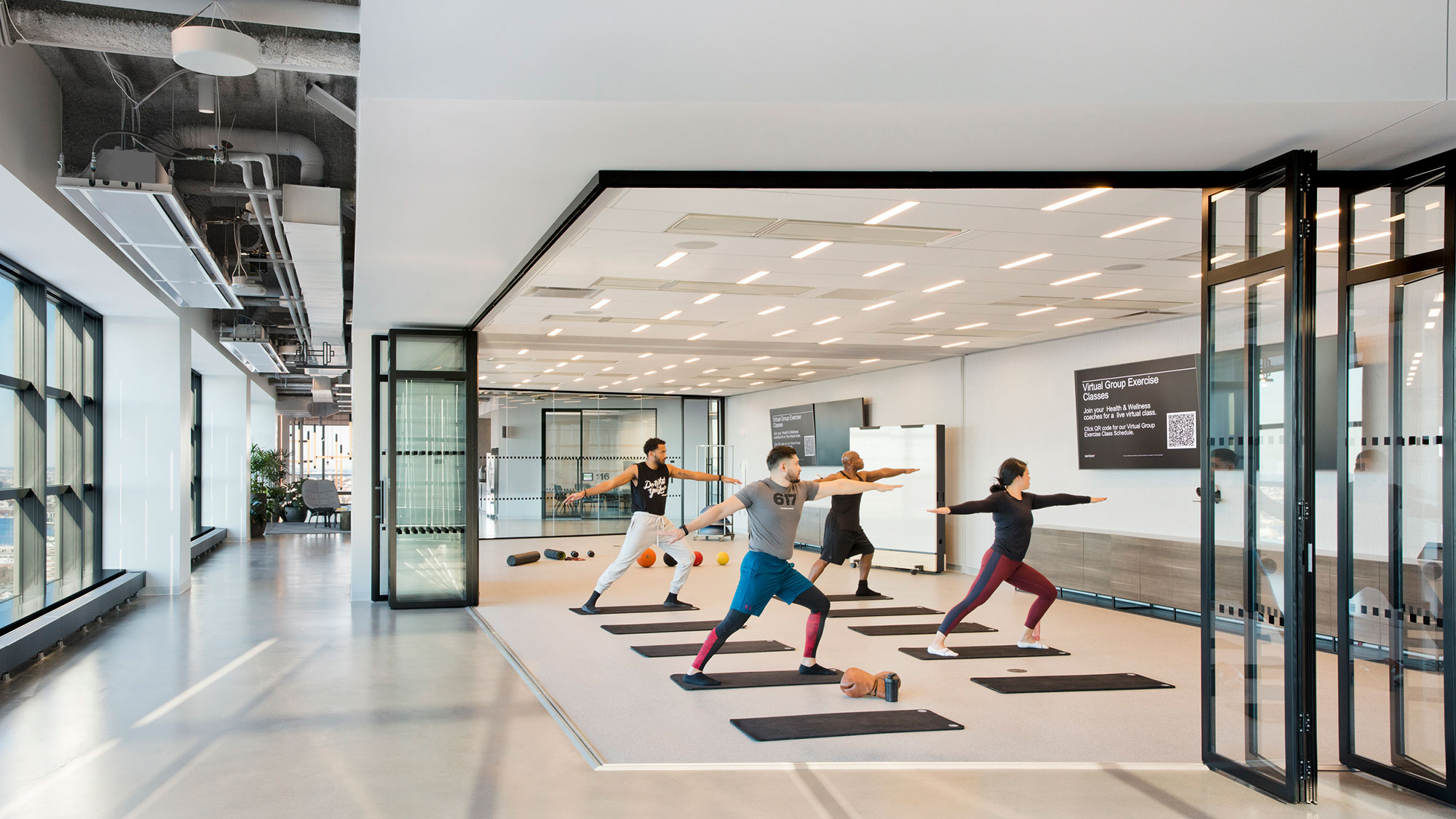
To keep the best employees from looking elsewhere, employers must first gain their trust. One way to do this is by designing the physical workplace to reduce exposure to germs and mitigate sickness. Different personnel policies were adapted in the pandemic that vary from location to location and industry to industry, but new products in the office can also help. Active clean overhead lighting emits antimicrobial wavelengths for constant cleaning, while touchless door and cabinet pulls are another example. Ultimately, well-being is personal and does not look the same for everyone, so organizations will have to incorporate new ways into their workplaces to support the physical and mental health of current and future employees.
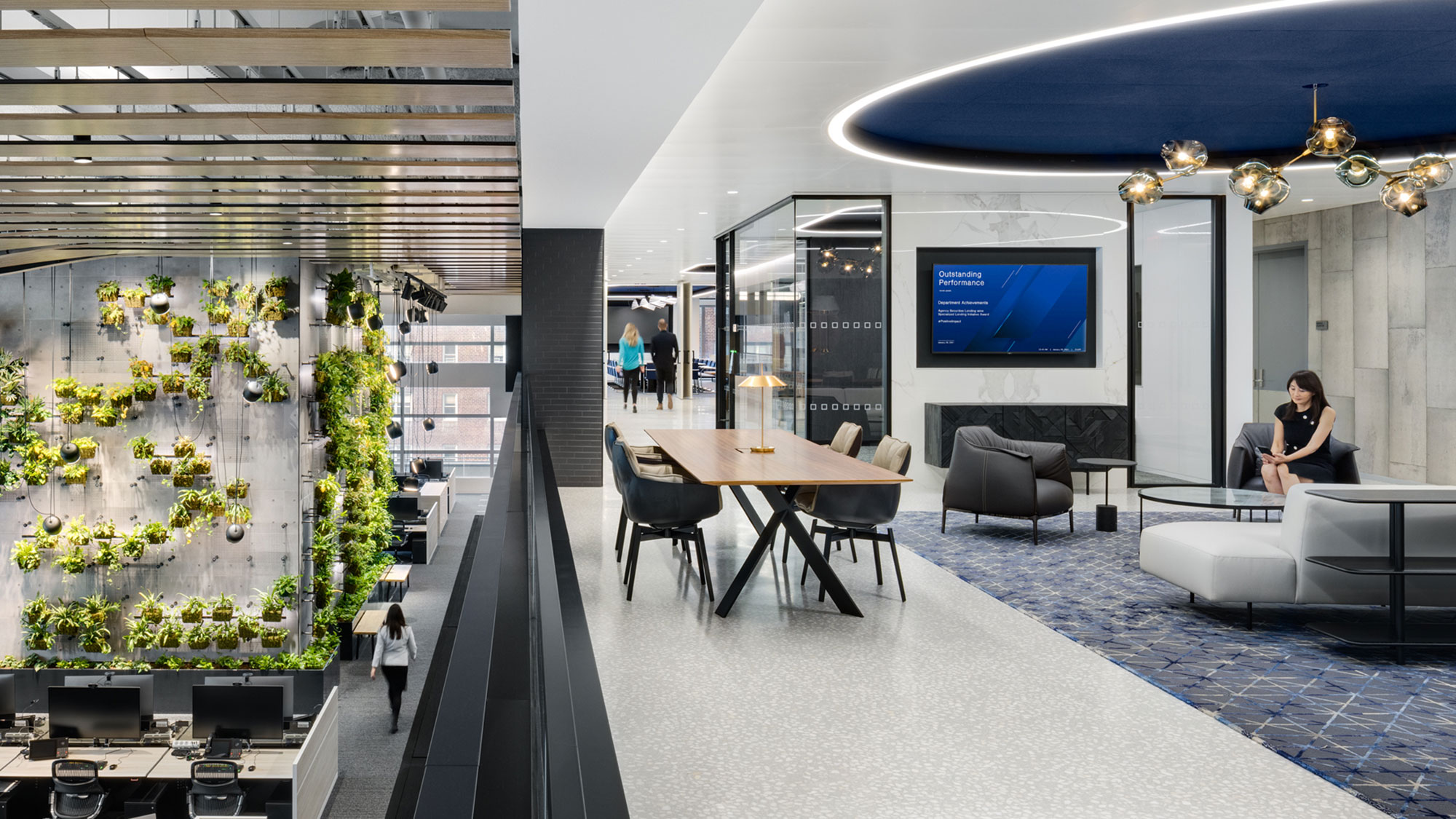
Flexible layouts and furniture
According to our most recent U.S. Workplace Survey, a majority of office workers had some form of an open office environment pre-pandemic, but again, only half consider this to be ideal going forward. For some, privacy has become another benefit of working from home that they are not willing to give up, while others who weren’t lucky enough to have that luxury working from home crave a sense of privacy in the office even more. Of course, what is considered “ideal” conditions will only continue to shift over time.
We once designed commercial spaces with a lease term expectancy in mind (think 10 to 15 years), but we now understand that they will evolve over time based on how they are being used. Flexible layouts and furniture are the most sensible and sustainable options. Adaptable partition systems allow for multiple room sizes and privacy. Hackable furniture, like modular storage systems and furniture on wheels, is designed to be easily reconfigured by tenants without approval or assistance from office services. These design strategies give companies and their employees the freedom to change their spaces according to preference and need. For so many workers who are hesitant to return to an office (or are unsatisfied with their current one), the freedom of choice in how they set up their workstation could make all the difference.
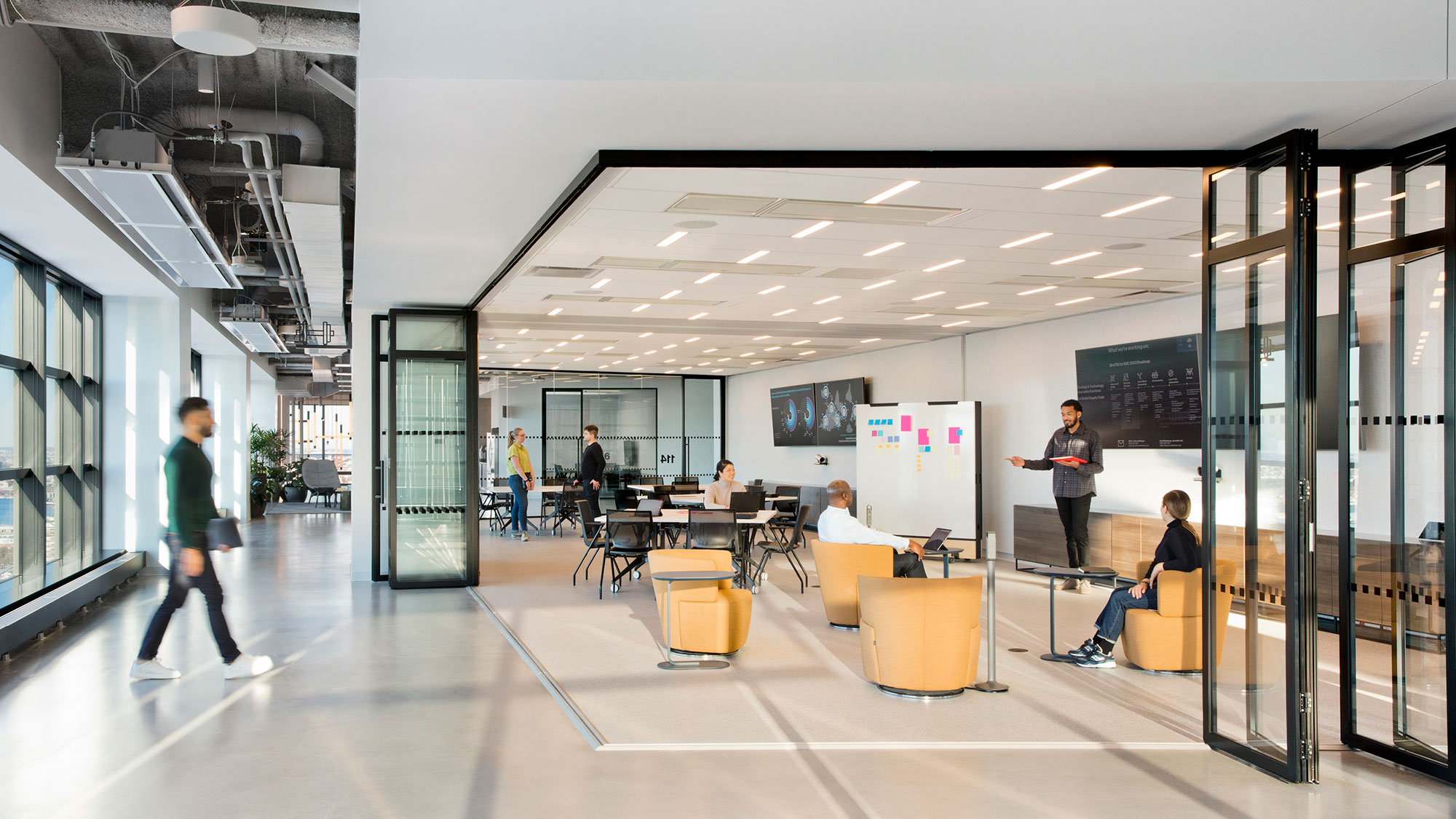
Workplace design needs to be flexible to accommodate a variety of business futures, but also so employees can picture their personal growth and evolution at the company. This is essential for talent longevity. Now is an exciting opportunity to redefine the physical workplace and design spaces that focus on providing exceptional experiences. We also know that to compete in a war for talent, companies must also support an entire ecosystem of workspaces where talent can thrive.
For media inquiries, email .
